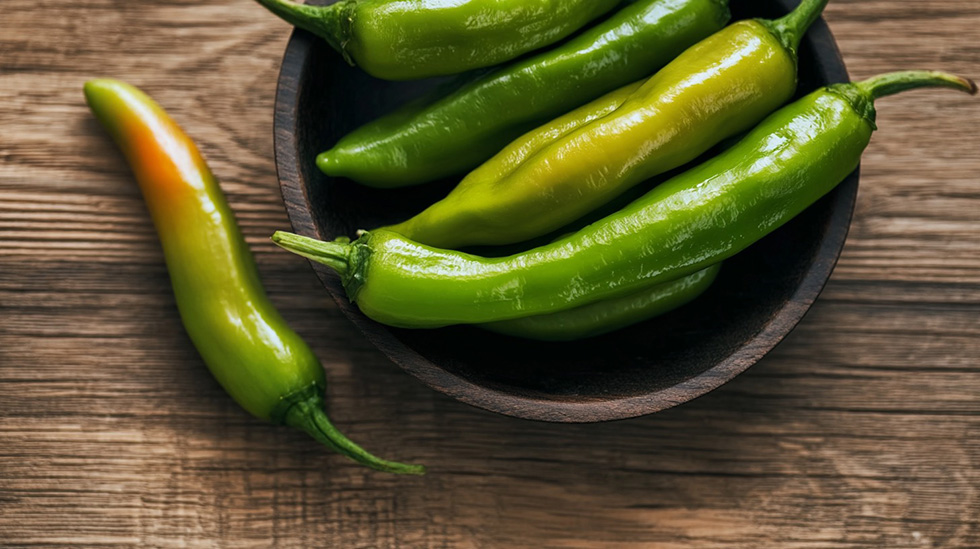Hot pointed peppers – the fiery champion of Hungarian cuisine 🌶️
The pointed hot pepper, or hot paprika as it is known to many, is a favourite hot addition to Hungarian households. Its Latin name is *Capsicum annuum*, and it is the elongated, thin-skinned, hot variety. It originated in Central and South America and was introduced to Europe in the 16th century. In Hungary, it has been a staple ingredient for several centuries, especially in village kitchens.

Nowadays, it grows well in the warm, sunny regions of the Great Plain, so it is no wonder that it has become one of the iconic varieties of Hungarian paprika cultivation.
Importance in the kitchen
Rated 5 out of 5
The pointed hot pepper is extremely important in Hungarian cuisine – it is the basis of almost all spicy dishes. From lecsó to stew to pickles or even fresh, bitten into a piece of greasy bread. It is also used in Europe, but here it is particularly well respected.
Which part of the plant is edible?
It is the fruit of the hot pointed pepper that we eat – an elongated, pointed-tipped, green, red or yellowish vegetable. The seed coat is not usually eaten, but it is not poisonous – just bitter. The stems and leaves of the peppers, on the other hand, are not edible and can even be mildly poisonous in large quantities. When ripe, the fruit has the most flavour and aroma.
Health benefits
The pointed hot pepper is a health bomb! It’s packed with vitamin C (beating even lemons), vitamin A, antioxidants and of course the aforementioned capsaicin, which:
- stimulates metabolism
- can help you lose weight
- anti-inflammatory
- may be beneficial for digestion
It is also known as a painkiller in traditional medicine – it is no coincidence that some muscle relaxant creams contain capsaicin!
Specificities of its production
The main season for hot peppers is in summer, from July to September, when they are harvested in the open field. In Hungary, it is mainly grown in the regions of Békés, Csongrád-Csanád and Szentes, and can be harvested in greenhouses and foil tents in early spring. In Europe, Spain and Hungary are the two largest producers, but also Serbia and Bulgaria produce significant quantities.
On the shelves of shops, it is mostly found from spring to autumn as a Hungarian product, while in winter it is often imported from Spain, Morocco or Turkey.
How to choose good quality hot peppers?
It’s not difficult to spot good quality pieces, just look out for the following:
- Keep the skin firm and smooth – wrinkled, soft peppers are no longer fresh.
- The colour should be bright, not faded.
- Avoid pieces with damaged or mouldy tips.
Fresh peppers crack easily if you break them in half – always a good sign!
Storage tips
Store in the fridge in a vegetable storage compartment for 5-7 days to keep fresh. If you want to keep it longer, freeze it chopped or pickle it. Drying also works, but it changes the flavour and pungency.
In the kitchens of the world
The pointed hot pepper is not only popular in our country!
- In Mexico, similar types of peppers are used to make the famous salsa.
- In Thailand it is used to flavour spicy soups and curries.
- In Italy it is eaten marinated in olive oil as part of antipasti.
- Also used in Serbia and Bulgaria for ajvar, pickles.
It is found in some form in almost every part of the world.
Emblematic recipe: spicy lecsó
Ingredients:
- 3 tomatoes
- 2 red onions
- 5 peppers (at least 2 of them should be sharp and strong!)
- 1 tablespoon fat or oil
- 1 teaspoon salt
Fry the onions, add the diced peppers, then the tomatoes, season and cook over a low heat. If you want a real taste orgy, you can add an egg at the end. This soup is guaranteed to sting – but that’s what makes it perfect! 🔥
Kitchen use tips
You can use the pointed hot peppers:
- fresh, sliced for sandwiches
- in lecsó, stew, goulash
- pickled – as part of a classic bait bath
- deep-fried or grilled
Spices that go well with it:
- garlic
- pepper
- oregano
- bazsalikom
- smoked paprika
Spices that are less suitable:
- cinnamon
- cloves
- vanilla
In summary
Not only is the pointed hot pepper an essential ingredient in Hungarian cuisine, it is also a real energy bomb. Healthy, full of character and with endless variations – fresh, roasted or pickled. If you like spicy flavours, this is your best friend in the kitchen! 😉
